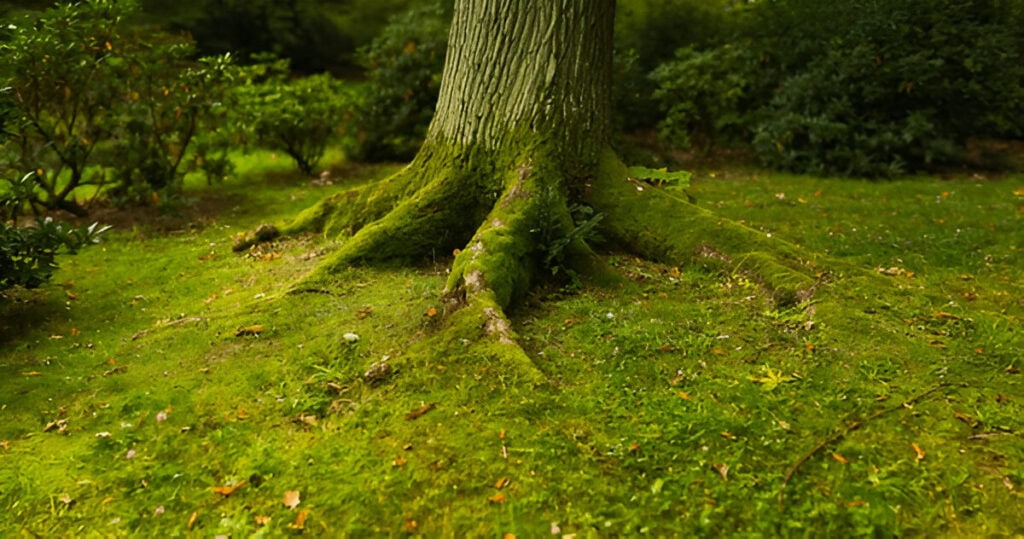Tree Health and Maintenance , Evansville
We take care of your trees right here in Evansville, where we’ve helped homeowners keep their trees strong and beautiful for over 12 years. Our team of tree experts will check your trees, trim them when needed, and fix any problems – just like a doctor keeps you healthy! With over 1,000 happy customers last year alone, you can trust us to look after the trees that make your yard special.
GET A FREE ESTIMATE
Trees are vital to our environment and well-being, offering shade, improving air quality, and enhancing the aesthetic appeal of landscapes. Maintaining tree health is essential for ensuring their longevity and the benefits they provide. This article outlines the importance of tree care and offers practical tips for maintaining tree health.
Why Tree Health Matters?
The Environmental Powerhouse
Trees are far more than just beautiful additions to our landscape – they’re essential guardians of our environment and well-being. A healthy tree does much more than provide shade on a hot summer day; it actively works to make our world better in countless ways. A mature, healthy tree can absorb about 48 pounds of carbon dioxide annually, helping to combat climate change.
These same trees release enough oxygen to support two human beings for an entire year. In urban areas, healthy trees are particularly crucial – they can reduce air temperatures by up to 8 degrees Fahrenheit, significantly cutting energy costs for nearby buildings.
A Smart Investment
The economic benefits of maintaining healthy trees are truly remarkable. Well-maintained trees can increase property values by 10-15%, making them a valuable asset to any property.
In contrast, diseased or dying trees not only decrease property value but can also pose significant safety risks and lead to expensive removal costs. A healthy mature tree can also save homeowners up to $250 annually in energy costs through strategic shading and wind protection.
Nature’s Water Management System
Healthy trees serve as natural water management experts. Their root systems help prevent soil erosion, filter groundwater pollutants, and reduce stormwater runoff.
A single mature tree can intercept more than 1,000 gallons of rainwater annually, helping to prevent flooding and maintain water quality in our communities. The complex root networks act like nature’s own filtration system, ensuring cleaner water reaches our aquifers.
Supporting Wildlife and Biodiversity
Trees are vital hubs for local wildlife. A single oak tree can support over 500 different species of insects and animals, creating a thriving ecosystem in your backyard.
They provide essential nesting sites, food sources, and shelter that are crucial for maintaining local biodiversity. From birds building nests in spring to squirrels storing acorns for winter, healthy trees sustain wildlife throughout the year.
Human Health and Wellbeing
The impact of healthy trees on human health cannot be overstated. Studies have shown that areas with healthy tree coverage experience lower rates of stress, anxiety, and depression among residents.
Children who grow up in areas with healthy urban forests tend to have better concentration levels and show improved academic performance. The presence of healthy trees in urban environments has been linked to faster recovery times for hospital patients and reduced instances of respiratory problems in local communities.
The Cost of Neglect
However, these benefits only come from healthy trees. Diseased or stressed trees not only fail to provide these advantages but can become hazards to public safety. Regular maintenance, proper care, and early intervention when health issues arise are essential to ensure our trees continue to serve these vital functions in our communities. The cost of maintaining healthy trees is far less than dealing with the consequences of neglected tree care.
Understanding why tree health matters helps us appreciate the importance of proper tree care and maintenance. Whether it’s a single tree in your backyard or an entire urban forest, investing in tree health is an investment in our collective future and the well-being of our planet.
Key Aspects of Tree Health and Maintenance
Regular Inspection and Monitoring
Every healthy tree starts with vigilant observation. Professional arborists recommend quarterly inspections of your trees to catch potential issues early. During these checks, experts look for signs of disease, pest infestation, structural weaknesses, or environmental stress. Early detection can prevent up to 90% of major tree problems and save thousands in potential removal costs.
Proper Pruning Practices
Smart pruning is crucial for tree health and safety. The best time for pruning is typically during the dormant season, between late winter and early spring. Professional arborists follow the 3-D rule: remove Dead, Damaged, and Diseased branches first. Never remove more than 25% of a tree’s live branches in a single season, as this can stress the tree and compromise its health.
Soil Health and Root Care

The foundation of tree health lies beneath the surface. Healthy trees need well-draining, nutrient-rich soil with adequate space for root growth. A tree’s root system typically extends 2-3 times the width of its canopy. Maintaining proper soil pH (typically between 5.5 and 7.0 for most trees) and ensuring good soil structure are essential for nutrient uptake and stability.
Water Management
Proper watering is essential yet often misunderstood. Young trees need about 10 gallons of water per inch of trunk diameter each week during the growing season. Mature trees generally require deeper, less frequent watering. The key is to water slowly and deeply, allowing moisture to reach the entire root zone. Using mulch can help retain moisture and regulate soil temperature.
Mulching
Done Right Proper mulching is one of the most beneficial practices for tree health. Apply a 2-4 inch layer of organic mulch in a ring around the tree, extending to the drip line but keeping it 6 inches away from the trunk. This helps retain moisture, suppress weeds, and moderate soil temperature. Avoid the common mistake of “volcano mulching,” which can lead to trunk decay and root problems.
Disease and Pest Management
Trees face numerous threats from pests and diseases. A proactive approach to pest management, including regular monitoring and appropriate treatment when necessary, can prevent serious infestations. Many tree problems can be managed through cultural practices that promote tree vigor, reducing the need for chemical interventions.
Storm Preparation and Recovery
Healthy trees are more resilient to storm damage. Regular maintenance, including proper pruning and structural support when needed, can significantly reduce storm-related tree failures. After storms, prompt professional assessment and necessary corrective actions can prevent further damage and help trees recover more quickly.
Professional Care and Timing
While some tree care tasks can be handled by homeowners, certain aspects require professional expertise. Certified arborists have the knowledge and equipment to safely perform complex tasks like large branch removal, cabling, or treating diseases. Professional tree care is particularly important for mature trees, which can take 50-100 years to replace if lost due to poor maintenance.
Need Tree Health and Maintenance , Evansville?
Over 175 ⭐⭐⭐⭐⭐ Reviews from Our Customers
Common Tree Health Challenges
Environmental Stress One of the most significant challenges trees face is environmental stress. Extreme weather conditions like drought, flooding, or sudden temperature changes can severely impact tree health. Urban trees particularly struggle with limited root space and compacted soil, which affects about 80% of city trees. Heat islands in urban areas can raise temperatures by up to 10°F, putting additional stress on trees trying to maintain proper hydration and nutrient uptake.
Disease and Fungal Infections Diseases can quickly compromise tree health, with fungal infections being particularly troublesome. Common issues include:
- Dutch Elm Disease, which has destroyed over 77 million American elm trees
- Oak Wilt, affecting thousands of oak trees annually
- Apple Scab, impacts both ornamental and fruit-bearing trees Early detection and proper treatment are crucial, as some diseases can spread through entire root systems within one growing season.
Insect Infestations Pest problems can devastate tree populations. The Emerald Ash Borer alone has killed hundreds of millions of ash trees in North America since its discovery in 2002. Other significant pests include:
- Gypsy Moths, defoliating over 75 million acres of forests
- Pine Beetles, affecting millions of acres of coniferous forests
- Scale Insects, which can reduce tree growth by up to 40%
Root System Damage Underground challenges often go unnoticed until significant damage occurs. Construction activities within 50 feet of a tree can damage up to 40% of its root system. Common root problems include:
- Compacted soil from foot traffic or vehicles
- Root cutting during construction
- Suffocation from excess fill soil
- Competition from nearby pavement or structures
Poor Pruning Practices Improper pruning ranks among the top human-caused tree problems. Topping, the practice of removing large branches or tree tops, can reduce a tree’s lifespan by 50% or more. Over-pruning can remove too much of a tree’s food-producing foliage, while under-pruning can lead to weak structure and increased storm damage risk.
Soil and Nutrient Deficiencies Many trees struggle with poor soil conditions, particularly in urban environments. Common issues include:
- Nutrient deficiencies affecting leaf color and growth
- pH imbalances limiting nutrient uptake
- Poor soil structure reduces root growth
- Lack of organic matter affecting soil biology Studies shows that urban trees often live only 20-30 years, compared to 150+ years in natural settings, largely due to poor soil conditions.
Storm Damage and Recovery Severe weather events can cause significant trauma to trees. Wind damage, lightning strikes, and ice storms can lead to:
- Branch breakage and crown damage
- Trunk splits and bark wounds
- Root plate upheaval
- Secondary pest and disease invasion After major storms, trees need careful assessment and often require professional intervention to prevent long-term health decline.
Competition and Space Constraints As urban areas expand, trees face increasing competition for space and resources. Problems include:
Reflected heat from nearby structures A mature tree needs about 1,000 cubic feet of soil to grow properly, yet urban trees often get less than 100 cubic feet.
- Limited soil volume for root growth
- Competition from turf grass and other plants
- Restricted canopy space due to buildings and power lines

